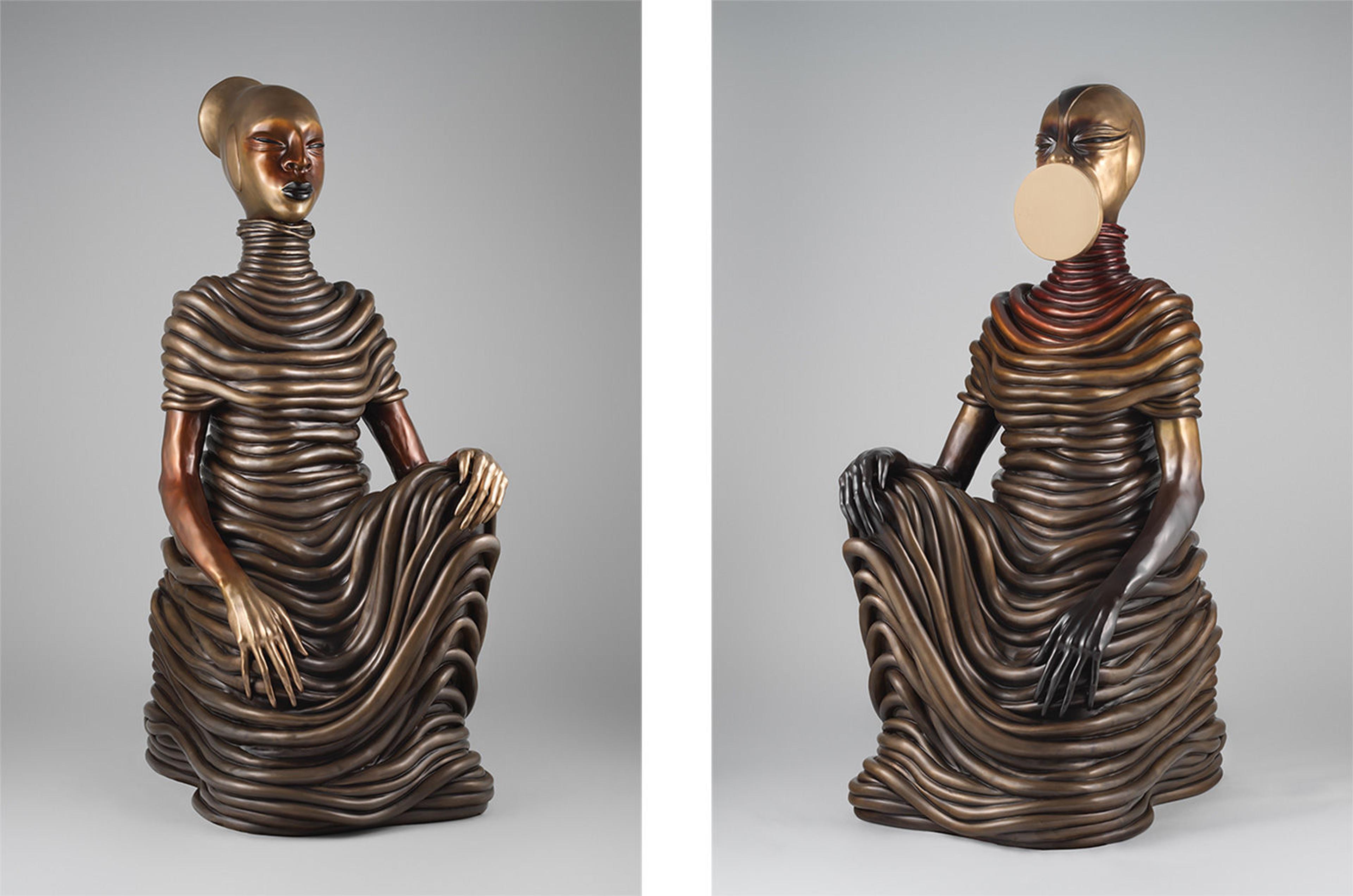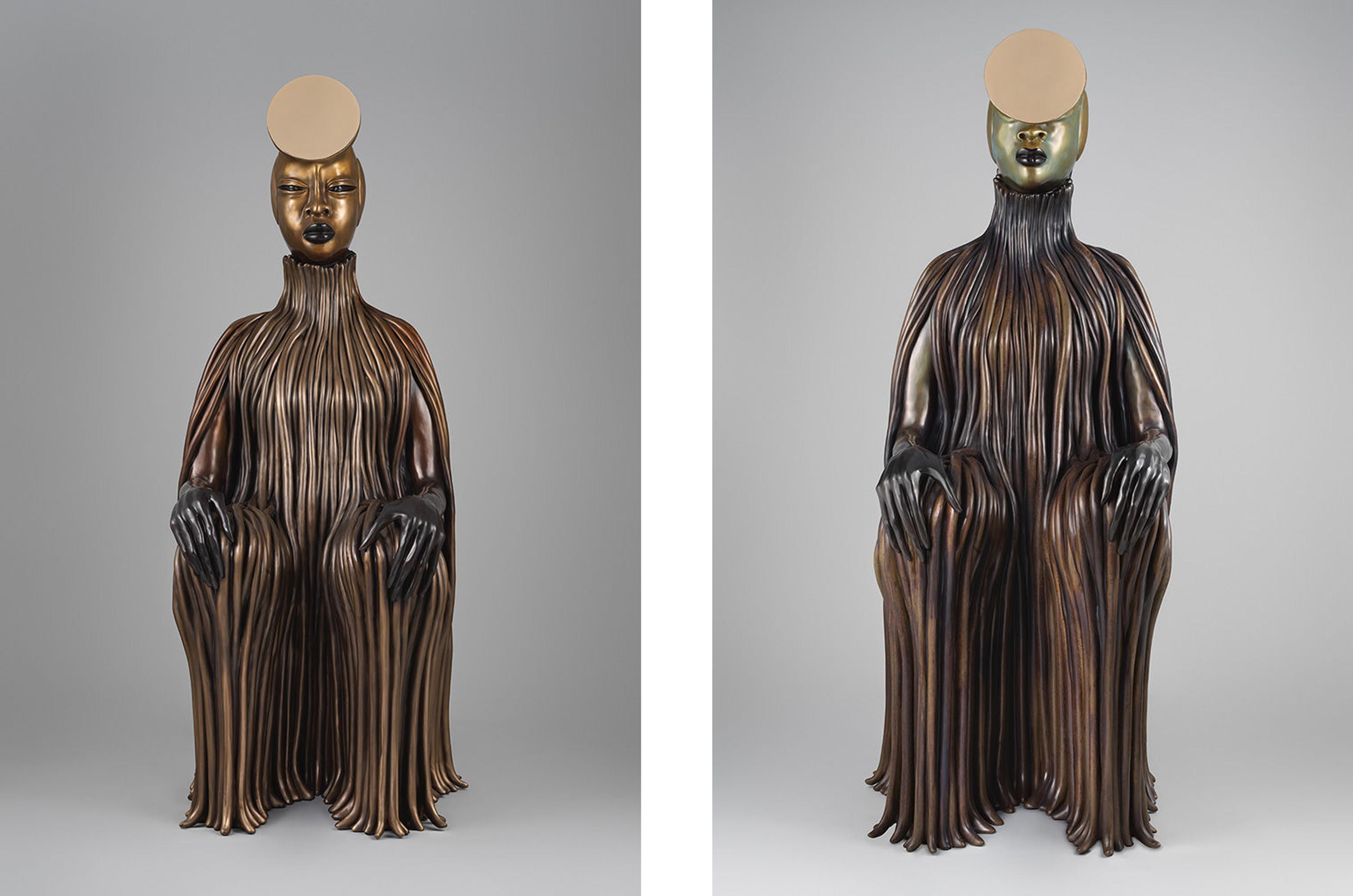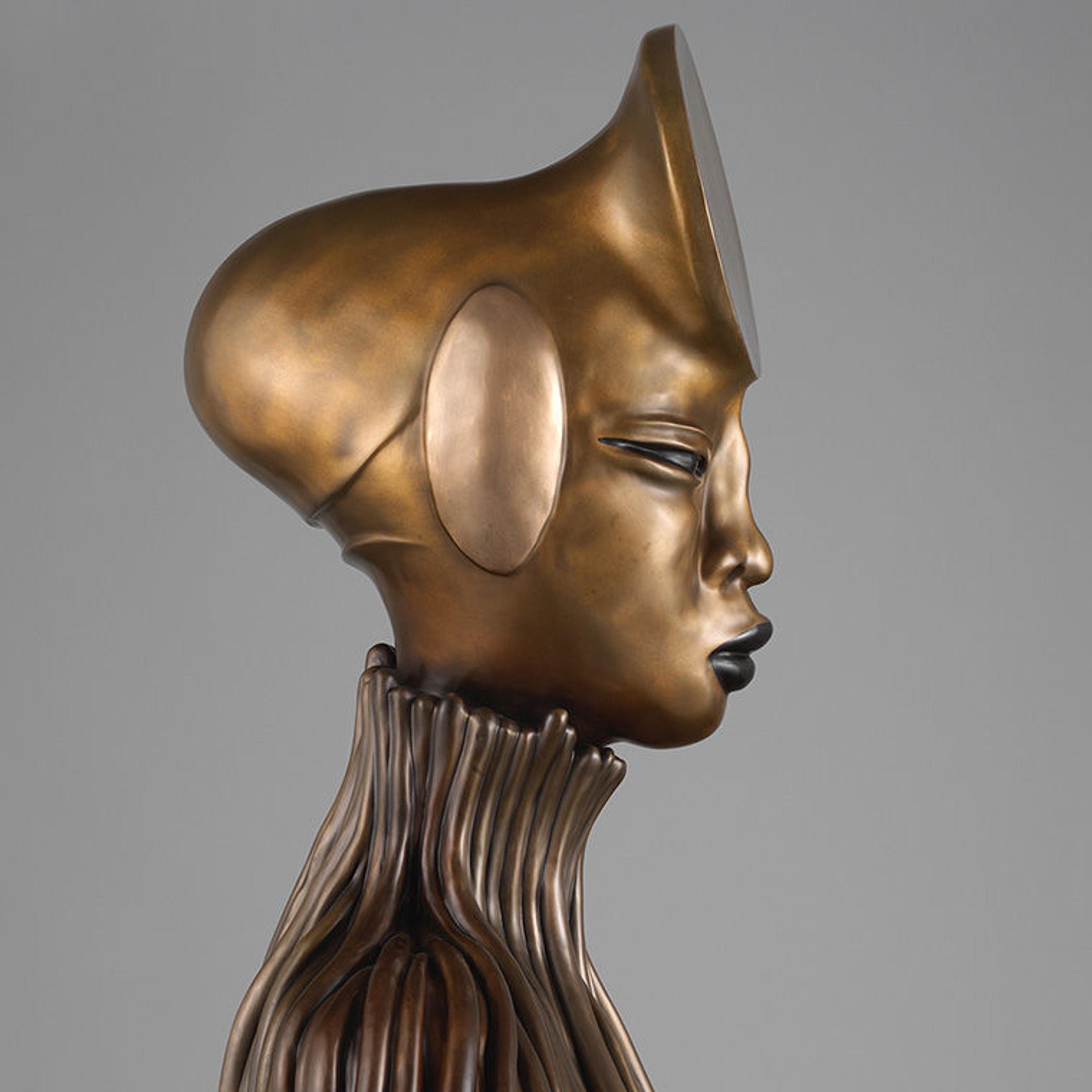Watch an interview with contemporary artist Wangechi Mutu, who discusses her exhibition The NewOnes, will free Us.
With great honor, we welcome four new guests to The Met this week—taking a place that has been waiting for them since 1902 when our main building's facade was completed. Well, not guests, but four sculptures from the acclaimed contemporary artist Wangechi Mutu that together will inaugurate an annual commission for The Met's facade each fall season.
It's a somewhat curious opportunity. One of the great joys and challenges that I, as the Director, share with our team of over one hundred curators is that we have a collection of such wonderful scope and size that we are always looking to make the most out of every nook and cranny of our over two-million-square-foot building. Yet, amazingly, we haven't used the facade to display art beyond the sculptural elements that currently exist on the exterior. Indeed, not only has The Met not previously used the front of its iconic Beaux Arts building to present new art, we have even failed to take advantage of the fact that there are eight sculptural niches—pedestals included—literally carved into the facade, each with space to display a piece up to seven feet in height.
The important news is that today, we will seize this opportunity with an artist who is perfect for this moment in The Met's history, and for our world today. Wangechi Mutu was born in Nairobi, Kenya, in 1972 and trained in sculpture at Yale, from which she received her MFA in 2000. Familiar to the art community for her exhibitions across the world, including her appearance in the current Whitney Biennial, she is one of the most distinguished artists of her generation. Mutu has achieved critical acclaim for her haunting, otherworldly collage-paintings but also her art films, live performances, and indeed sculptures. Typically composed of either bronze or organic materials, Mutu's three-dimensional works depict formidable figures that reference modern and classical mythologies, and that conflate histories and sculptural traditions of Africa and Europe. Her sculptures reflect critically on social and ecological injustices and inequalities. Female transformation and empowerment are at the core of all her ideas, and in evidence in the completed work.

Left: Wangechi Mutu (Kenyan, born 1972). The Seated I, 2019. Bronze, 79 1/8 x 31 3/4 x 42 1/4 in. (201 x 80.6 x 107.3 cm). Right: Wangechi Mutu (Kenyan, born 1972). The Seated III, 2019. Bronze, 82 1/2 x 35 3/4 x 42 1/2 in. (209.6 x 90.8 x 108 cm)
The facade commission is part of a new series of contemporary art commissions through which The Met invites artists to create works of art that establish a dialogue between the artist's practice and our physical Museum, its collection, and our visitors. And as I think you'll agree, Mutu's four monumental yet complex figures achieve precisely this goal. Titled The NewOnes, will free Us, this work took some of our collections as a starting point, engaging the history of both Western and African art, and repurposes a motif common to both: the caryatid. Nearly always represented as a female figure, the caryatid has historically functioned as a support, either to something—in a classical building on the Acropolis in Athens, for example—or to someone else, such as on a prestige stool for a Luba king in West Africa. Mutu took this traditional function and turned it on its head. Here, the caryatids have been liberated from their supporting role: these magnificent, commanding figures assert their power and independence, and directly engage with all who visit the Museum.
"I've chosen to stick with the subject of the female body as a platform for what we feel about ourselves as humans." Listen to Wangechi Mutu discuss the meaning of her four seated figures.
What I am most grateful to Wangechi Mutu for is how this grand, temporary installation enables the Museum to continue our momentum on the important path of rethinking what an encyclopedic museum can and should provide, and how it can engage with the important notion of contemporaneity in a meaningful way.
The concept of an encyclopedic museum came from the Age of Enlightenment as a means of bringing the cultures of the world into one place, one museum, and then telling one more or less linear story about them, usually with a very Eurocentric view. That view is now of course not only outdated in our time of globalization and interconnectivity, but we have to realize that that story does not represent the truth of cultural development in the first place. Indeed, there is no one story of human creativity and culture, but rather many different stories and narratives that intersect. And even within that complicated narrative, there are multiple viewpoints on any work of art and its corresponding cultures. It is the representation of these multiple readings, voices, and narratives that is so extremely critical to the relevancy and power of encyclopedic institutions.
The display of The NewOnes, will free Us also enables The Met to continue to evolve the role of contemporary art within the building. As our Museum has the benefit of art covering over five thousand years of history, we need not merely isolate contemporary art to one set of galleries; rather, we can enable works by living artists to be in dialogue with art from multiple millennia, cultures, and disciplines. This approach can be interesting, bold, playful, and also challenging. Expanding the complex readability of our objects necessitates focusing on their artistic brilliance and art-historical relevance, as well as on their embedded role and their often charged origins in a complex social, political, and historical framework.

Left: Wangechi Mutu (Kenyan, born 1972). The Seated II, 2019. Bronze, 80 3/4 x 31 3/4 x 37 1/4 in. (205.1 x 80.6 x 94.6 cm). Right: Wangechi Mutu (Kenyan, born 1972). The Seated IV, 2019. Bronze, 80 1/2 x 33 3/8 x 36 3/4 in. (204.5 x 84.8 x 93.3 cm)
As we continue to engage our ever-expanding audiences in these conversations, opening their eyes to the artistic brilliance yet sometimes even confusing stories that these extraordinary objects can tell, we will broaden our reach both locally and around the globe, fulfilling our mission as the seminal encyclopedic museum of the world, for the world, and in the world.
We have many to thank and congratulate for this moment. First and foremost, thank you to Wangechi Mutu for taking on this extraordinary challenge in such a superb way—for engaging with The Met collection, for creating these extraordinary works, and for helping us update and expand The Met's contribution to what it means to be an encyclopedic museum in the twenty-first century. As well, we extend gratitude to Kelly Baum, who curated this project, Sheena Wagstaff, leader of the Modern and Contemporary program, and a very broad team of Met colleagues who all worked tirelessly and creatively to realize this opportunity. This was made possible through the generous support of Cathrin M. Stickney and Mark P. Gorenberg, with additional support from the Ford Foundation, Cynthia Hazen Polsky and Leon B. Polsky, Sylvie Winckler, Jerry Speyer and Katherine Farley, and the Director's Fund.
The Met will celebrate its 150th anniversary in a mere few months. Our Museum began with nothing—not a royal collection or a former palace to hold its items stood at the beginning of our history. The founders of this institution did not have a single work of art but rather a grand idea and, how could it be any other way in New York, a lot of ambition. It was the vision of a small group of city leaders and artists who had the foresight to begin to build a collection that is now enjoyed by millions annually and admired around the world. While we are always grateful for the founders of The Met, and each generation of its supporters, today we owe a special thanks to the visionaries who had the idea of carving the sculptural niches into our facade—and who ran out of money to fill them when our current building was initially erected.
It took a while—some 117 years—yet here's to many fall seasons ahead of art on our facade that will welcome, educate, inspire, and also challenge visitors for decades to come.
Related Content
Hear Wangechi Mutu discuss the work of Egon Schiele in this episode of The Artist Project.
Learn more about The Met's recent acquisition of a mixed media collage by Wangechi Mutu on MetCollects.
